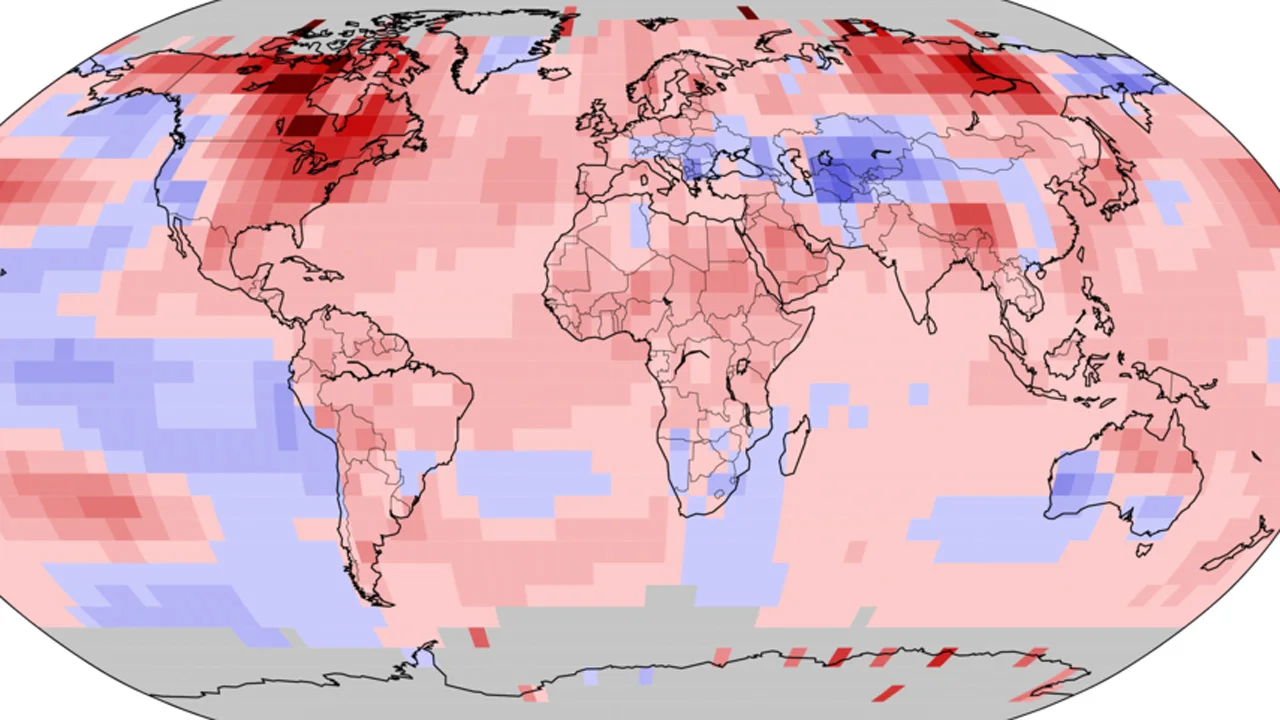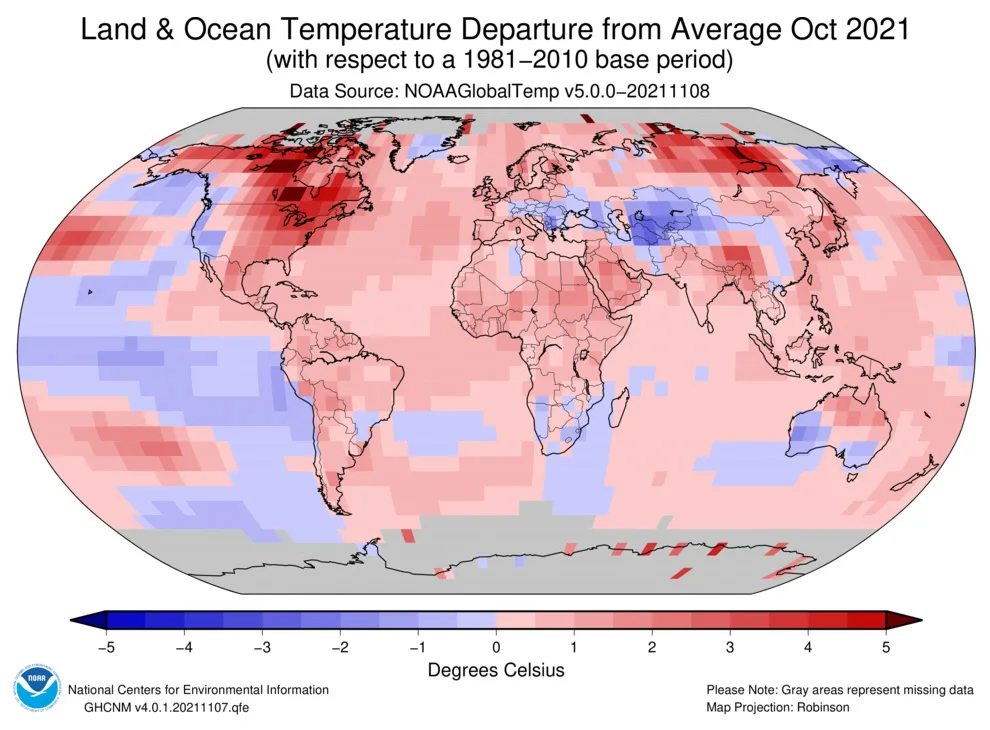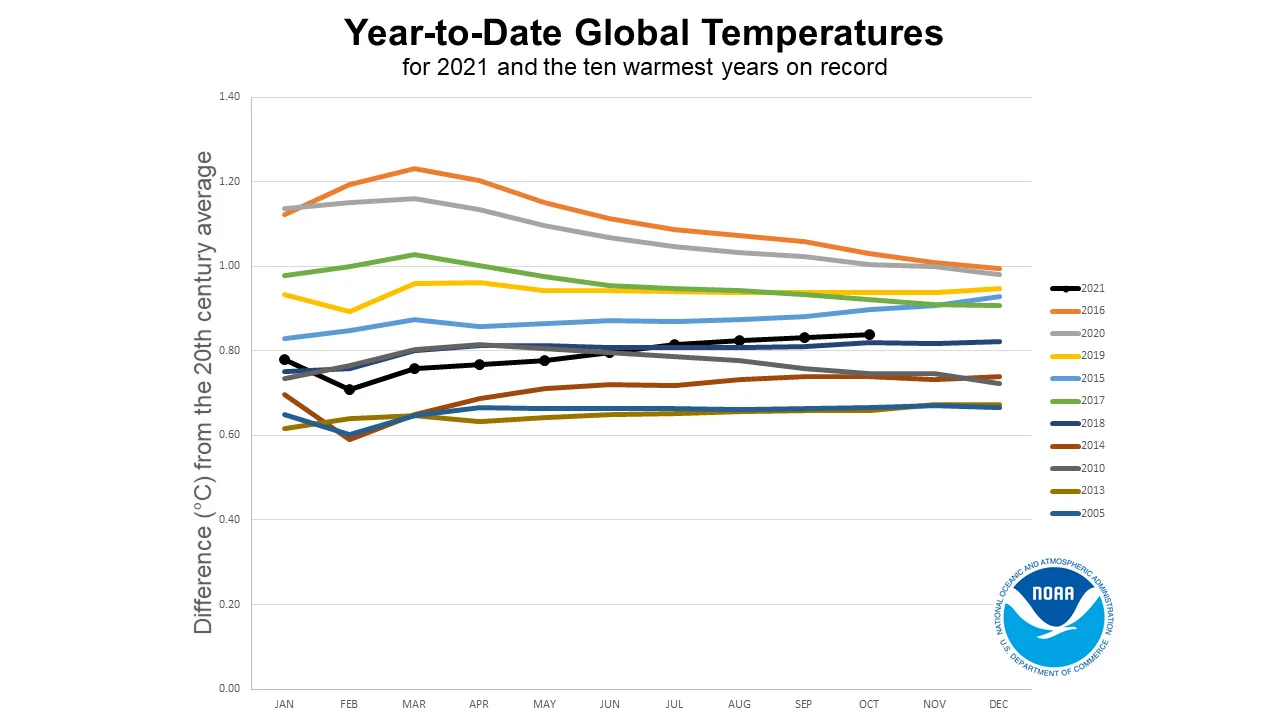
Some regions of Canada were global climate hot-spots in October
Last month, new temperature records were set across the northern hemisphere, with Ontario and parts of Canada's north coming in as some of the hottest regions in the world.
Following a record-hot September across the southern hemisphere, temperatures across land in the northern hemisphere reached new highs in October. In particular, Canada stood out among other nations last month, logging some of the hottest temperatures in the world.
According to NOAA's October Global Climate Report, last month ranked as the fourth warmest month of October on record for the globe, at 0.89°C above the 20th century average temperature of 14°C.

Global temperatures for October from 1880 to 2021, as compared to the 20th century average of 14°C. Credit: NOAA NCEI
NASA's records agree, placing October 2021 as fourth warmest. Meanwhile, the Japanese Meteorological Agency (JMA) and Europe's Copernicus Climate Change Service have the month estimated as the third warmest, behind 2015 and 2019.
Counting only stations on land, where nearly the entire population of the planet lives, October jumped up into the #3 spot in NOAA's records, at 1.39°C above the 20th century average. Specifically across land in the northern hemisphere — where close to 90 per cent of people call home — October 2021 was the warmest October ever, in the 142 years since record-keeping began.
Two hot spots stood out in NOAA's records last month. Both Central Siberia and the eastern half of Canada logged temperatures far above normal in October. Notably, in Nunavut, northern Quebec, and southwestern Ontario, new monthly records for heat were set.

This map of global average temperatures for October 2021 shows the relative hot spots and cool spots on the planet during the month. The cooler sea surface temperatures across the central Pacific Ocean note the presence of a La Nina pattern there, while eastern Canada and central Siberia are the hot-spots for the globe. Credit: NOAA NCEI
"According to Meteorological Service of Canada, Ontario (located in eastern Canada) had October temperatures that were 3.0–6.0°C above average," NOAA stated in the report. "During October 7–15, several locations across Ontario had maximum temperatures above 20°C."
WHERE DOES 2021 STAND?
Taking the entire year into account, thus far, NOAA ranks January–October of 2021 as the 6th hottest such period on record.

This graphic compares the year-to-date temperature anomalies for 2021 (black line) to what were ultimately the ten warmest years on record: 2016 (1st), 2020 (2nd), 2019 (3rd), 2015 (4th), 2017 (5th), 2018 (6th), 2014 (7th), 2010 (8th), 2013 (9th), and 2005 (10th). Each month along each trace represents the year-to-date average temperature anomaly. In other words, the January value is the January average temperature anomaly, the February value is the average anomaly of both January and February, and so on. Credit: NOAA
"Looking ahead," the report states, "the year is virtually certain to rank among the ten warmest years on record, with the highest probability of ranking as the sixth warmest year on record."

